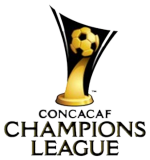The recent changes to the Major League Soccer schedule and competition format are hardly the only ones impacting professional soccer teams in North America.
Coinciding with the MLS SuperDraft, U.S. Soccer and CONCACAF announced major changes to the CONCACAF Champions League and U.S. Open Cup going forward, changes that drastically alter the regional and domestic competitions. The biggest change to the CCL is that the preliminary round is no longer, and a straight group-to-knockout format featuring fewer overall games is the new arrangement. For the U.S. Open Cup, it is now a 64-team field with all U.S.-based MLS teams being entered into the bracket instead of having their own qualifying path.
The changes for both tournaments go into effect immediately, meaning that Real Salt Lake and the Houston Dynamo, which had qualified for the now-defunct preliminary round of the CCL, are entered directly into the group stage instead of having to go through preliminary games this summer.
Here is a closer look at the differences between past and present for the two tournaments:
CONCACAF CHAMPIONS LEAGUE
PAST: Preliminary-round format with 16 teams vying for eight spots in the 16-team group stage. Eight preliminary-round winners advanced to the group stage, where they joined the eight automatic qualifiers and competed in four groups of four teams each.
Each team played six group games — all opponents home and away — and the top two teams in each group advanced to the knockout stage, where teams played a home-and-away series with the aggregate goal winners advancing in each round until a champion was crowned.
PRESENT: Instead of some having to go through a qualifying process, all 24 teams are entered directly into the group stage. There are eight groups of three teams each, and teams play against the other two teams in their group at home and away. Only group winners advance to the knockout stage, which remains unchanged.
Teams are placed in different pots for the group stage based on strength of country from which they are qualifying and the way in which they qualified. For example, the MLS Cup and Supporters' Shield winners get placed in the first of three pots, and the MLS Cup runner-up and U.S. Open Cup winner gets put in the second pot (barring duplicate qualifiers — since Los Angeles won both the MLS Cup and Supporters' Shield, Seattle earned a place in the first pot).
Of the eight teams in the seeded pot, two are the top qualifiers from Mexico, two from the United States and there is one apiece from Costa Rica, Honduras, Guatemala and Panama. Canada's qualifier (One of MLS' Vancouver, Toronto and Montreal or NASL's FC Edmonton) is entered into the second pot.
Teams cannot play against others from the same country in the group stage, and each group will have at least one team from the United States or Mexico.
With only four group games being played instead of six, the CCL puts less stress on teams' schedules. The group stage begins on July 31.
"This new format will streamline the first phase of the competition," Ted Howard, CONCACAF's acting general secretary, said in a release. "It will alleviate schedule congestion on both domestic and international calendars."
———————
U.S. OPEN CUP
Photo by ISIphotos.com
PAST: Teams from the professional and amateur sects of U.S. Soccer qualify for the tournament proper field, which was at 40 teams in 2011. Six MLS teams made the final field based on previous season's record, while the remaining teams embarked on a qualifying tournament to determine the league's other two spots. Those eight MLS teams entered in the third round.
NASL teams were omitted from the tournament field last year after not receiving provisional sanctioning on time.
PRESENT: A 64-team format featuring 32 teams across all sanctioned levels of U.S. Soccer and 32 affiliated amateur teams of the U.S. Adult Soccer Association and U.S. Club Soccer that qualify are entered into a tournament bracket. All 16 U.S.-based MLS teams are entered into the tournament instead of going through an MLS qualifying bracket to reach the USOC proper field.
The 32 amateur teams are paired together geographically for the first round, though teams from the same qualifying bracket cannot go up against one another. Those winners go up against teams from NASL and USL Pro in the second round, with games being arranged by geographical preference. Winners from those matches go up against MLS competition in the third round, with matchups again being determined by region.
Another major change is how game hosts are determined. In the past it was a blind bidding process, where home games went to the highest bidder. From every round through the quarterfinals, the hosts are now determined randomly. There has yet to be an announcement about how the semifinal and final hosts will be determined.
———————
What do you think of the drastic changes to the CCL and USOC? Think they are steps in the right direction?
Share your thoughts below.

